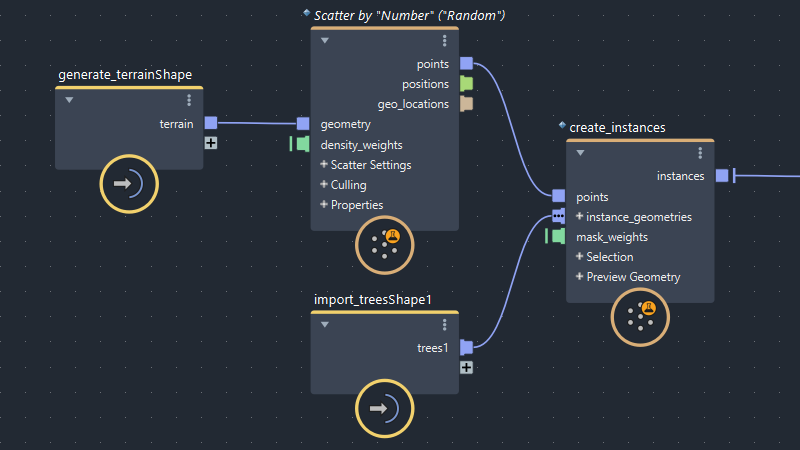Control the sequential execution of multiple graphs
You can create a chain of graphs in a Maya scene, with the outputs of each graph feeding the inputs of the next. Graphs that are earlier in the chain do not get recompiled or recomputed unless required, so you can make changes to later graphs with less computational overhead. It also lets you create scenes and graphs that are more readable and logically organized.

To chain graphs, drag and drop a graph from Maya's Outliner into a second graph in the Bifrost Graph Editor. This creates an input node that lets you use the Object and array<Object> outputs of the first graph in the second one. It is equivalent to manually connecting the output of one graph to the input of another in Maya's Node Editor.
The graph that you drag and drop must have at least one output of type Object or array<Object> at its top level. Geometry that is connected only to a terminal node is not supported.
This lets you create a chain of graphs quickly and easily, so that the first graph is not recomputed unless its inputs change. For example, you can put a heavy simulation in the first graph, and use the second graph to rapidly experiment with post-sim effects.